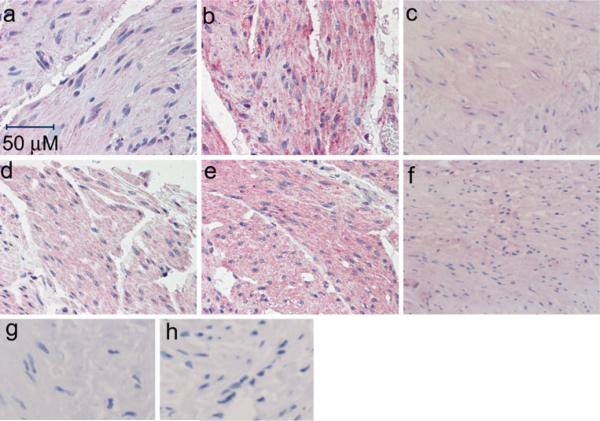Fig. 2.
All three β-ARs are expressed in human detrusor. These samples of normal bladder were obtained from older (80-year-old (a,b), 66-year-old (c)) females, versus young (34-year-old (d,e), 38-year-old (f)) females and stained for expression of the β1-(a,d), β2 -(b,e), and β3-(c,f) ARs with the SC-567 (a,d) LS-A2662 (b,e), and LS-A4198 (c,f) antibodies, respectively. Panels g,h demonstrate an absence of staining obtained in the presence of non-immune rabbit IgG antibody for the corresponding tissues (66- and 38-year-old female samples for the β3 antibody, respectively). Similar negative results were obtained in the absence of primary antibody on the samples for the β1- and β2-AR antibodies (data not shown). Blush to faint staining was observed in the muscularis propria for the β1 receptor, and was similar in the younger and older samples. The muscularis propria was faint to moderately positive for β2 -ARs in both the younger and older samples. A similar faint expression of the β3-AR was observed in the muscularis propria in all samples regardless of age. The antibodies were used at 2.5, 10, and 10 μg/ml, respectively

